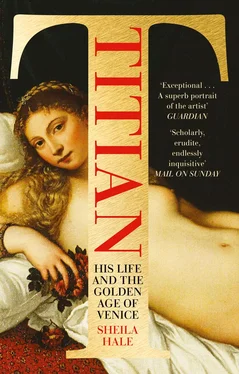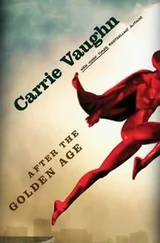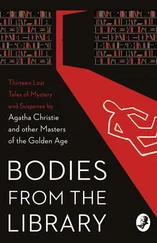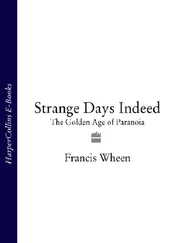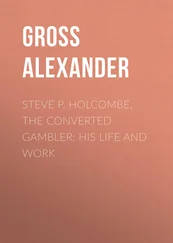1 ...6 7 8 10 11 12 ...17 And the government never made the mistake of expelling Jews for long. Jews, as Sanudo put it, were ‘as necessary as bakers’. After 1516, when refugees from wars in northern Italy had inflated the Jewish population, they were confined in the first of all ghettos (named after an abandoned iron foundry on the site). Nevertheless, Jews continued to arrive from all over Europe and the Levant. Some, who did not wish to be recognized as Jewish, were successful in petitions to release them from the obligation to wear the Jewish hat. Many of the most illustrious Venetian doctors, philosophers and printers were Jews; and some German Jews made small fortunes in the antiques and second-hand trade after they were granted the exclusive privilege of furnishing all ambassadorial apartments. Those who converted to Christianity were nevertheless regarded with suspicion, less because of their race than because being polyglot their identities were difficult to fix. But, in a city whose wealth depended on trade with the Muslim Levant and which accommodated so many non-Christian inhabitants, attitudes to religious practice were on the whole more relaxed than elsewhere in Europe. The journey between Venice and Constantinople was the most described of all voyages in the Renaissance, and many Venetians who made it recorded their admiration for the cleanliness, order and beauty they found in the Ottoman Empire. Some converted to Islam and occupied high positions in the sultanate.
The art of printing was introduced to Venice by German, French and Syrian immigrants, some of them Jews, who built presses in the late 1460s, only two decades or so after the invention of movable type by Johannes Gutenberg, and soon produced the first printed editions of Pliny the Elder’s Natural History and of the erotic love poems of Catullus, making them widely available to those who could read Latin and afford the price of a book. By 1500 about half of the books produced in Italy, and a sixth of those in Europe, were printed in Venice, perhaps as many as 1,125,000 volumes.12 With something between one and two hundred print shops in early sixteenth-century Venice13 the prices went down while the quality of woodcuts and engravings improved. The educated classes from all over Europe came to Venice to buy their books and prints, while the printing trade enriched the population mix by creating a demand for literate workers who could edit, commission, proofread, translate or plagiarize. Some were inevitably hacks, but others were intellectuals who encouraged the development of a high humanistic culture of the kind that had flourished in central Italy and the university town of Padua for more than half a century.
The Venetian presses produced the first printed editions of everything from musical scores, an exposition of double-entry bookkeeping, manuals about sewing and lace making to the Koran, while Venetian woodcuts of mythological subjects provided artists and craftsmen north and south of the Alps with ideas for the design of every kind of object, from hatbands and wedding chests to garden statues and easel paintings. Entrepreneurial publishers also commissioned single woodcuts, impressions of which were sold in large editions on the international market as decorative objects, to be mounted on canvas or pasted directly on the walls of houses. (It is likely that Jacopo de’ Barbari’s enormous map, which is far too large to be carried round the city as a guide, was intended for display in this way.) The young Titian was more widely known for his woodcuts14 than for his oil paintings.
Italian translations of classical texts, some of them free interpretations or conflations of more than one original story, made them accessible to people who could not read Greek or Latin. Ovid’s enjoyable tales of lustful gods and goddesses and terrible punishments had been told and depicted since the Middle Ages, but it was not until 1497 that the first Italian translation of the Metamorphoses, published in Venice as a prose paraphrase and illustrated with fifty-three woodcuts, enabled artists with no classical languages to read the stories for themselves. Contemporary writers evoked their own idealized versions of a pastoral antiquity.15
Aldo Manuzio, a publishing genius who came to Venice in the 1490s from a small village near Rome, set up shop in Campo San Agostino in 1502 and made his Aldine Press the most commercially successful as well as the most scholarly of some 500 editorial houses in the city. Venetians – despite the elite taste for collecting ancient Greek sculptures and the presence in the city of educated Greek refugees after the Turkish conquest of Constantinople in 1453 – had until then shown little interest in the Greek literature, science and philosophy that made one of the most significant contributions to the mindset of the European Renaissance. Humanists read the work of the ancient Greek mathematician Pythagoras, who had discovered that the intervals in the Greek musical system could be measured in space, and the account by his follower Plato16 of the rational order of a divinely created universe. Both of these influenced not just architects but also, it has been suggested,17 the compelling intervals and rhythms of some of Titian’s paintings. Nevertheless, the fate of a great library of ancient Greek manuscripts left to the Venetian state in 1468 by the Greek cardinal John Bessarion testifies to the intellectual provincialism of the Republic at a time when Roman and Florentine scholars had been reading Greek texts for at least two decades. Although one of the conditions of Bessarion’s bequest was that the library should be open to the public, the codices were left in crates in a hall in the doge’s palace where some were damaged and some ‘borrowed’ and sold without anybody noticing. It was not until 1530 that Pietro Bembo, the newly appointed librarian of St Mark, began promoting the idea of a purpose-built library, which was begun seven years later but not finished until the end of the century. Meanwhile Aldo, who launched his press with a Greek grammar, published some of the Bessarion manuscripts, and soon became the leading European publisher of Greek texts. Aristotle and Plato had been available in Latin translations since the early fifteenth century, but Aldo was the first to publish them in the original Greek. By the time he died in 1515 he had printed twenty-eight editions of Greek classics, including the complete works of Aristotle in five volumes, and the first complete editions of the tragedies of Euripides, Sophocles and Aeschylus, as well Erasmus’ translation into Latin of Euripides’ Hecuba and Iphigenia in Aulis. Although Titian was unable to read Greek or Latin, Manutius stimulated a new interest in Greek tragedy, and staged performances in Italian would exercise a profound influence on his treatment of mythological subjects.
The Aldine classics were printed in beautiful deluxe or affordable pocket editions – the pocket classic was Aldo’s invention. His contemporary list was no less impressive. Some of the ablest humanist scholars of the day came to Venice to see their books through the Aldine Press. Erasmus of Rotterdam, the most brilliant and later most influential leader of northern European humanism and Catholic reform, was in Venice in 1508 supervising the Aldine publication of his Adagia, the book that made him famous. He became a family friend – although he complained about the food in the Manutio household – and a friend, too, of the patrician Venetian writers and humanists Andrea Navagero and Pietro Bembo. Bembo was the greatest Venetian writer of his day and the only one who is still read outside academic circles. His use of Tuscan, the language of Dante, which he claimed made a sweeter sound than his native Venetian, established the norm for literary Italian for centuries to come. He also edited famous editions of Dante and Petrarch for the Aldine Press. Petrarch, who celebrated the ideal of a woman who is both chaste and an object of male desire, was especially popular, and Bembo, who greatly admired him but who was a relentless womanizer, resolved the paradox of chaste desire with a Neoplatonic interpretation that excuses carnal love as a first step on the ladder to the sexless Platonic ideal. His Asolani, published by the Aldine Press in 1505 at a time when he was suffering from disappointment in love, is set in Asolo, the hill town north of Venice, at the court of Caterina Cornaro, the deposed Queen of Cyprus. Its protagonists, six fictitious young Venetians, three men and three women, enjoy the dolce far niente – the sweetness of doing nothing – while they discuss the philosophy of love.
Читать дальше
